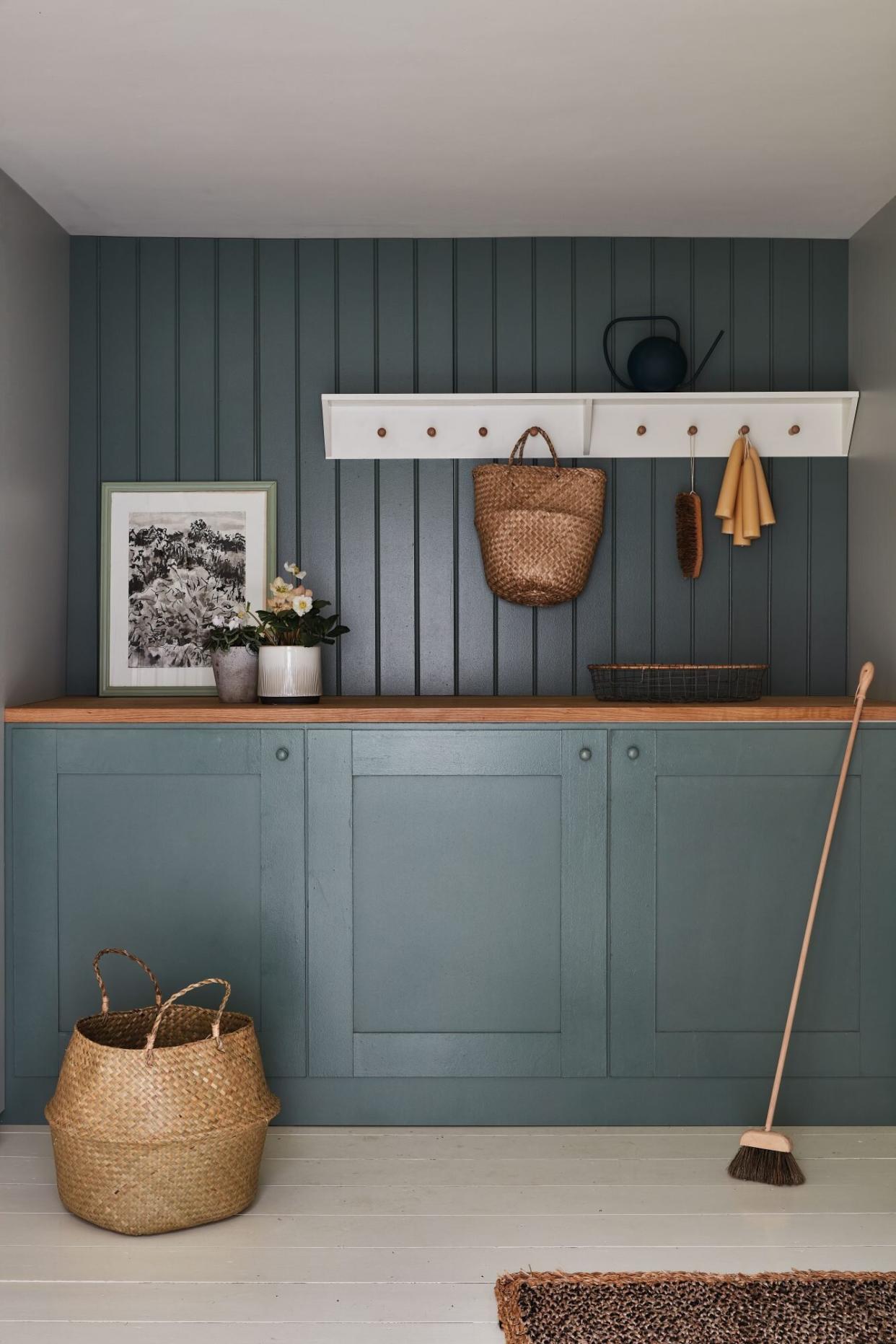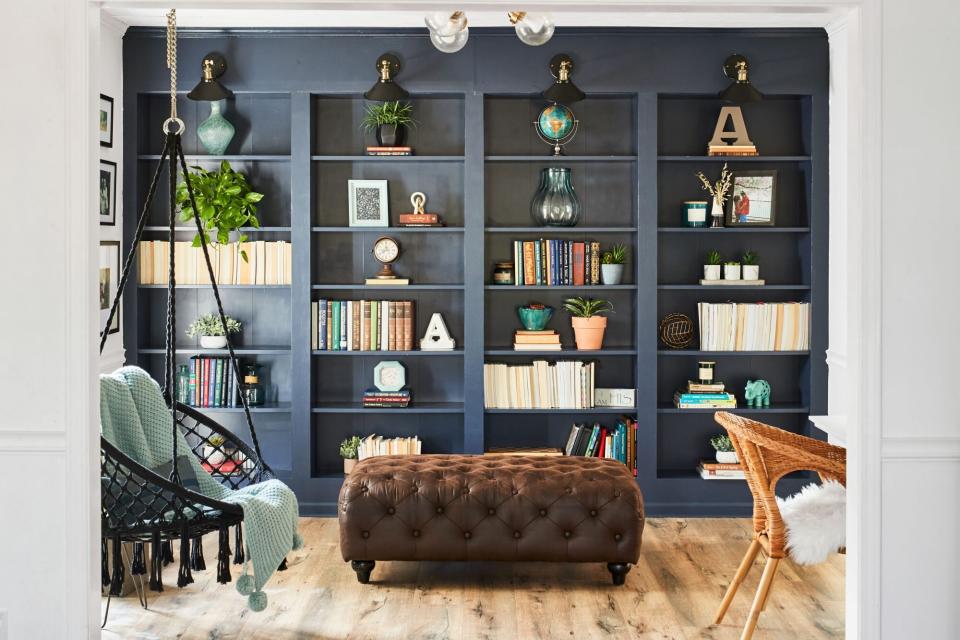14 Best Tips To Avoid Paint Color Mistakes in Small Spaces

Courtesy of Farrow & Ball
TABLE OF CONTENTS
On This Page
Accept There Are No Rules
Think About How You Want It To Feel
Think Carefully About the Room’s Construction
Be Aware of Different Paint Colors
Sample, Sample, Sample!
We all wish to select the perfect paint color for our homes, but despite best efforts, it often goes wrong. With thousands of options to choose from and countless digital inspiration images at our fingertips, knowing where to start and what to avoid can be challenging.
Here is where professional advice can simplify the process for us all. Designers and paint color experts from top retailers offer advice on repainting the smallest rooms in your house. These tiny spaces are often the most difficult to decorate, but with this sage advice, you're sure to design a beautiful room in no time.
Accept There Are No Rules
Embrace Your Interests
"Color is highly subjective," says Hannah Yeo, Color Marketing and Development Manager at Benjamin Moore. "The best measure of success is when the homeowner is happy with the final result for years to come."
"I thought I could be a neutrals girl, but I'm not. I'm embracing who I am and throwing in color wherever I see fit," Stacie says, painting bookshelves a bold navy.
Don't Let Others Decide
Even the experts don't know everything. If you dislike a suggested color, thinking it might grow on you later, you are wasting your time—and will likely repaint sooner than necessary.
Accepting that there are no rules means keeping the walls light and airy for some, but it is a bold statement for others. "As color is always highly personal, there is no single recommendation when it comes to paint colors for small rooms," Yeo explains.

Robbie Caponetto “I thought I could be a neutrals girl, but I’m not. I’m embracing who I am and throwing in color wherever I see fit,” Stacie says of painting the bookshelves bold navy.
Think About How You Want It To Feel
Think About the Room's Purpose
Interior designer Roger Higgins encourages homeowners to think carefully about the room's purpose before painting. "Is it where you plan to get ready in the morning and put on your makeup? Is it a space in which you want to sit and read?" he asks. "If so, consider paint colors that are not too dark or those that will reflect poorly on your skin. We often paint powder rooms or wet bars a darker color, but you have to make sure you have the right amount and application of lighting."
Patrick O'Donnell, the International Color Curator at Farrow & Ball, agrees. "It is less about the choice of color and more about the purpose of the room and the light in the room," he says.
Bringing the Outdoors In
Overwhelmingly, the enduring color of nature, varieties of leafy, lush greens, stand out. "Green is regaining its momentum and is great for transitional rooms such as entryway or mudrooms," she says. "Extend your outdoor space with colors like Fernwood Green (2145-40) or Lush (AF-475)."
O'Donnell prefers greens in small spaces, too. "A home office will take a strong color well," he says. "Think a deep, dark green such as Green Smoke, which will act as a dramatic backdrop. The color of nature is naturally soothing, so it allows you to focus on work."
Don't Follow Trends
Chasing the latest "trendy color" will leave you spinning with all the new color recommendations. Color trends, predicated yearly or even quarterly, will change, but it's not as likely that you will want to change your house's paint color. Find a shade that works with your existing space and agrees with the temperament you want the room to have because you'll ultimately be happier with your decision in the long run.

Photo: Laurey W. Glenn With the ceiling painted a faint shade of blue and walls that went from beige to crisp white, the room was quickly brought up to speed and became a canvas for furniture, art, and accessories. The couple gave the existing mantel an upgrade by painting it t
Think Carefully About the Room's Construction
Think About the Ceiling
If you're looking for a stand-out element, painting the ceiling can draw the eye and add interest to cramped quarters. "Consider choosing a lighter color above your eye level," Yeo says. "Lighter colored ceilings can visually heighten walls while creating a subtle contrast that brings depth and dimension."
Think About the Flooring
When deciding on a paint color for the walls, cabinets, trim, or anything else that needs updating, it's essential to consider what is already permanent in the space. Whether you have wood floors with a particular stain, carpeting, or painted floors, unless you plan to renovate, the paint color you select should enhance the space and not conflict with the existing elements. Although you might not consider it, your flooring already adds a decorative or colorful aspect to the room, so it needs to blend with your next paint color.
Think About Imperfect Surfaces
If you're considering a bold, high-gloss finish for a surface in a small space, be sure it has been adequately prepped and is perfectly smooth. "Higher sheens such as satin or semi-gloss reflect more light, which helps to lighten up the room," Yeo says. "However, keep in mind that glossier paint reveals more imperfection on the walls. Eggshell is the most common sheen for walls. It reflects a bit of light and is easily cleaned."
Stick To Cool Tones To Make a Room Feel Larger
"Generally speaking, cooler colors are known to recede, making the space look larger." Yeo's favorite shades? "Keep the tones light, such as Constellation (AF-540) or Silver Cloud (2129-70), to create an airy effect," she says.
If the goal is to make a small room feel bigger, O'Donnell says, "cooler colors recede (think soft, pale blues) and warmer colors advance (lovely smoky pinks)." While many assume white will lighten a room, if there is little natural light, the result may be a "gloomy gray space," he says. "Consider warmer tones or go dark—often the latter solution can be highly successful and play to the limitations of the space, creating a truly cozy atmosphere."

Photo: Laurey W. Glenn Three shades of blue from the same color card drench the floor, cabinets, and walls of this coastal kitchen. Paint: Tear Drop 2060-70, Cayman Blue 2060-50, and Toronto Blue 2060-40 by Benjamin Moore; benjaminmoore.com. Tour this Colorful Beachside Getaway
Be Aware of Different Paint Colors
Try a Monochromatic Palette
To feel calm and enveloped in color, consider choosing a monochromatic palette. "A monochromatic color scheme makes a seamless and cohesive room, allowing the space to look larger," Yeo says. "Bring in small accent colors through accessories and decorative elements to add interest."
Higgins agrees. "I do not typically overwhelm a small space with too many paint colors," he says. "For example, I generally won't paint the ceiling, trim, and cabinets different colors in a small space. Instead, I'd most likely opt to paint the walls and millwork the same color."
O'Donnell recommends a calming, frosty green like Cromarty when designing a nursery. "Another trick is to use one color all over (in the right finish for each surface), so you won't have any distractions from a contrasting trim or where the ceiling meets the wall," he says.
Don't Select White as a Default
While white can be a refreshing go-to for many, it can also keep a space from really coming to life and complementing the look and feel of the home. Particularly for small spaces like a powder bath or a home office, considering a wide range of color options can be beneficial. "Many homeowners default to an off-white paint color fearing color can make the space look smaller," says Yeo. "Color can enhance the look and feel you're going for."

Photo: Lucas Allen The walls, ceiling, and trim coated in a sunny yellow hue open up this narrow laundry room. Paint: Concord Ivory (HC-12) by Benjamin Moore; benjaminmoore.com.
Sample, Sample, Sample!
Ultimately, the best way to get paint colors right the first time is to sample top options in the space before deciding on a winning shade.
Don't Overlook Lighting
Check the samples throughout the day to observe how the changing light impacts the undertones. It may seem perfect in the morning but too bold at night. Both natural and artificial light can influence how color relates to its surroundings. Allow yourself time to view new paint colors in different weather situations, with the lights on and off, and in other parts of the room before making a decision.
Don't Rely on Paint Chips
Painting samples on movable boards (rather than the walls) is a great way to move samples around quickly. Instead of using paint chips or a fan deck to guess how a paint color will appear on your wall, use tape or something transportable to different areas of the room to see how the light reacts. You might find that one shade does not work for the whole space, and you need to consider a wainscotting or an accent wall instead.
Don't Select Paint in the Store
Don't feel pressured to buy a gallon of paint upon your first visit to the hardware store. Find a way to select smaller samples of the shades you think might work nicely with your vision and test them at home. Having some perspective and the opportunity to revisit your decision will provide more freedom when choosing paint colors as it won't feel so permanent.

